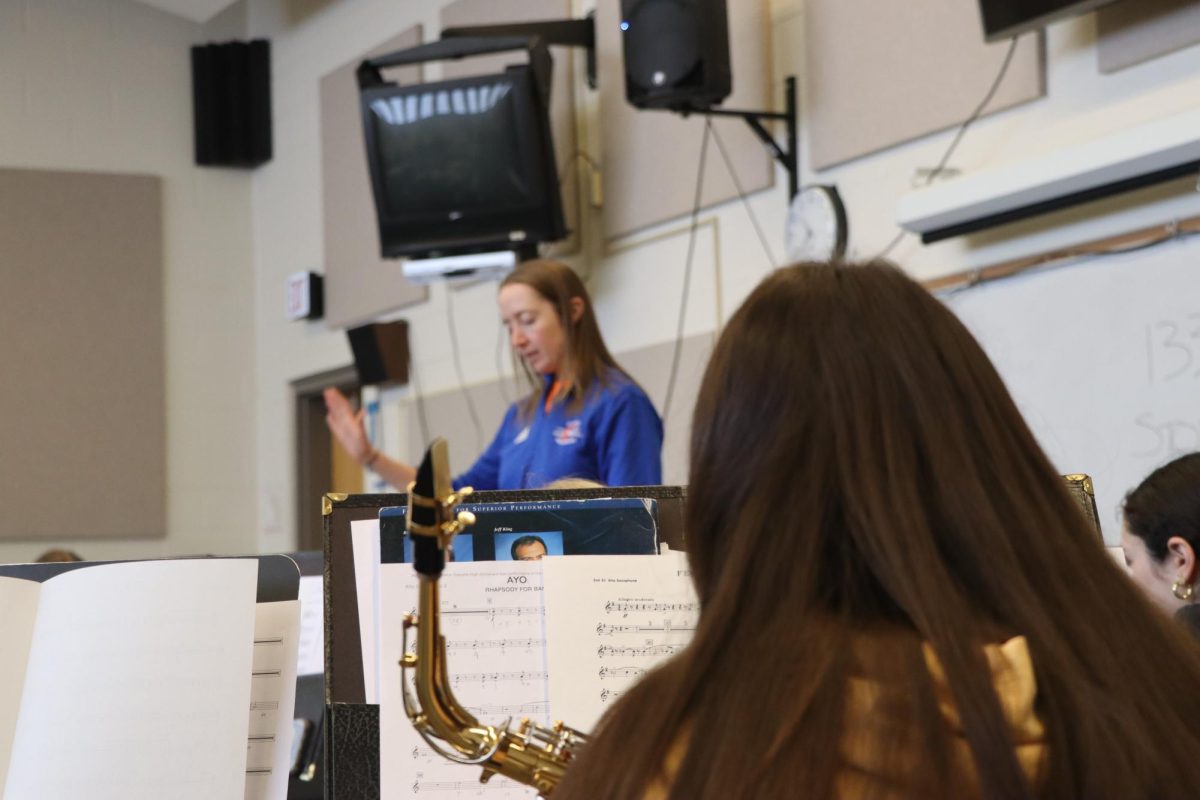Missouri has recently adopted the Common Core State Standards, a layout for primary and secondary education that attempts to transform the subpar United States educational system into a system that is world-class.

Clayton High School Math Department head David Kohmetscher is currently reviewing the new program.
“Academics have come out with what’s called the Common Core Standards, which is a list of standards in mathematics education broken down both by specific topic and by grade level,†said Kohmetscher.
The Common Core State Standards for English-language arts and mathematics were released June 2, 2010 and adopted by Missouri June 15, 2010, making Missouri the tenth state to adopt the program.
Before the program, Missouri implemented grade-level and course-level expectations curriculum in its schools. Students’ progress was tested by end of course exams. With the new system, however, both of these old models will be thrown out.
The Common Core State Standards Initiative effort was coordinated by the National Governors Association Center for Best Practices (NGA Center) and the Council of Chief State School Officers (CCSSO).
The goal of the initiative was to create a uniform educational system for the United States that could compete with the first-class educational systems of other countries such as Finland, Japan, and China.
Director of Assessment Heidi Shepard is working to review the new program and determine its context in Clayton curriculum.
“The goal of the Common Core Standards was to narrow the span of mathematic; to try and make math more coherent, clearer, and not so spread out,” said Shepard. “What we have found is the countries that are doing well, like Singapore and Hong Kong, have very specific standards that they map out for their students. It’s much easier for teachers and students both to have a clear focus.â€
Currently, 36 states have adopted the Common Core Standards and many more are in the midst of reviewing the initiative.
The Common Core Standards for mathematics emphasize problem solving, making connections, understanding a variety of representations of the same mathematical concept, and justifying the reasoning behind a problem.
While the program has effectively been initiated in Missouri, new tests that reflect the changed curriculum will not be in use until the 2012-2013 school year at the earliest.
This gives school districts, like Clayton, time to adjust to the changed standards. The math curriculum committee is now in the process of doing just that: examining the Clayton curriculum to find mismatches with the new standards or weaknesses in general.
“For Clayton, the change won’t be as great as it would be for other districts,” said Shepard. “We’ve always looked at the state standards as a minimal.”
The official deadline for the examination is the first week of November, but this deadline is just a small part of Clayton’s ongoing struggle to find a math curriculum that fits best.
“We’re trying to align our current curriculum with several different standards,†said Kohmetscher. “Right now we’re trying to match what we currently do against the Common Core Standards. With the Common Core Standards, certain topics get pushed from senior year to junior year. We’re also going to have to pick a new textbook series. It’s a fairly daunting task.â€
Because the Common Core State Standards have only just been finalized, few texts and math books have been created that follow up with the newly set curriculum. The Curriculum Committee now faces the task of finding a textbook on their own that is appropriate for the new curriculum.
An already challenging job may seem even more impressive given the controversy the ever-changing math curriculum has caused in the past.
Currently, CHS is implementing both traditional and integrated sequences. The integrated sequence evolved as a result of goals shared by the current Clayton curriculum and the Common Core State Standards. Both programs strive to bring U.S. education up to par with the educational programs of different countries.
“The math committee is looking to see what the best pieces are of good programs in mathematics and which ones we have to help keep our program as competitive as all the other programs out there,” said Shepard.
The Program for International Student Assessment, or PISA exam, compares the abilities of students from all of the principal industrialized countries in reading, mathematics, and science.
The PISA exam is a fairly new creation, and its results have spurred leaders of education in the U.S. into action. On the 2006 exam, American students ranked 21st out of 30 countries in science and 25th out of 30 countries in math.
This disappointing performance caused many to consider how the U.S. could improve its scores to become more competitive. The integrated program was created as a result of such considerations.
“When it became apparent that U.S. schools weren’t doing as well on international math exams as other schools, we started looking at what other countries do to prepare their students,†said Kohmetscher. “These other countries don’t teach classes like geometry, algebra I, and algebra II, they teach classes Math 1, Math 2, Math 3, and Math 4.â€
Whereas traditional math sequences teach by subject, integrated math sequences combine subjects so that multiple subjects are visited per year.
Math teacher Barbara Dobbert has taught at CHS for 17 years and witnessed the creation and growth of the integrated program.
“The integrated math curriculum is different in that there is a different order in which subjects are taught and subjects are revisited throughout the years,†said Dobbert. “In integrated, math is more embedded in context and it problem solving is encouraged.â€
Though the integrated curriculum is also supported by the Common Core State Standards, it has found some opposition in the Clayton School District.
Junior Martha Burke takes precalculus and finds the different curricular backgrounds of students in the class to be a challenge.
“I think the tracks in the math curriculum need to be more consistent,†said Burke. “Right now, the integrated track just ends and the people who were in integrated are funneled into precalculus.â€
The wide variety of classes provided for in the math curriculum also places extra stress on the staff.
“Because there are so many classes, teachers are spread really thin,†said Dobbert. “Given the size of Clayton, we may benefit from a more singular curriculum.â€
Though aspects of the integrated system present difficulties for some, others benefit from the more practical approach to mathematics.
Sophomore Abigail Copilevitz is now taking the Integrated II class.
“I like the math curriculum as it is now,†said Copilevitz. “We’ve learned about several different subjects so far, and I feel pretty comfortable.â€
Despite inconsistencies over how to best teach students, Clayton does well at reaching its goal and the goal of the Common Core State Standards: to prepare students for life and schooling after 12th grade.
Senior Alison Bayly has taken the honors track throughout high school and is now in AB Calculus.
“I’m satisfied with what I’ve learned in math and the ways in which I’ve learned it throughout high school,†said Bayly. “I’ve always done well in my math classes, and I performed well on the math portion of the ACT.â€
The math department has received plenty of criticism in recent years, but Bayly is just one example of the many students that smoothly and successfully transition through the curriculum.
“By any measurement our math curriculum has ever been measured by, we’ve done a good job,†said Kohmetscher. “There are very few public schools that do better than us on the ACT and SAT.â€
The success of the Clayton curriculum is supported by Clayton’s success in testing. While the average national composite score on the ACT in 2010 was 21, the Clayton average composite score was 25.
This accomplishment cannot be attributed solely to curriculum, however. No matter what changes in math curriculum are made by the state or by Clayton itself, the true power of the department lies in its teachers and students.
“Our program has a lot to do with the teaching and extra work done in class,†said Dobbert. “I’m a firm believer that what you put into the program is what you get out of it. There’s a lot more to it than just curriculum.â€






